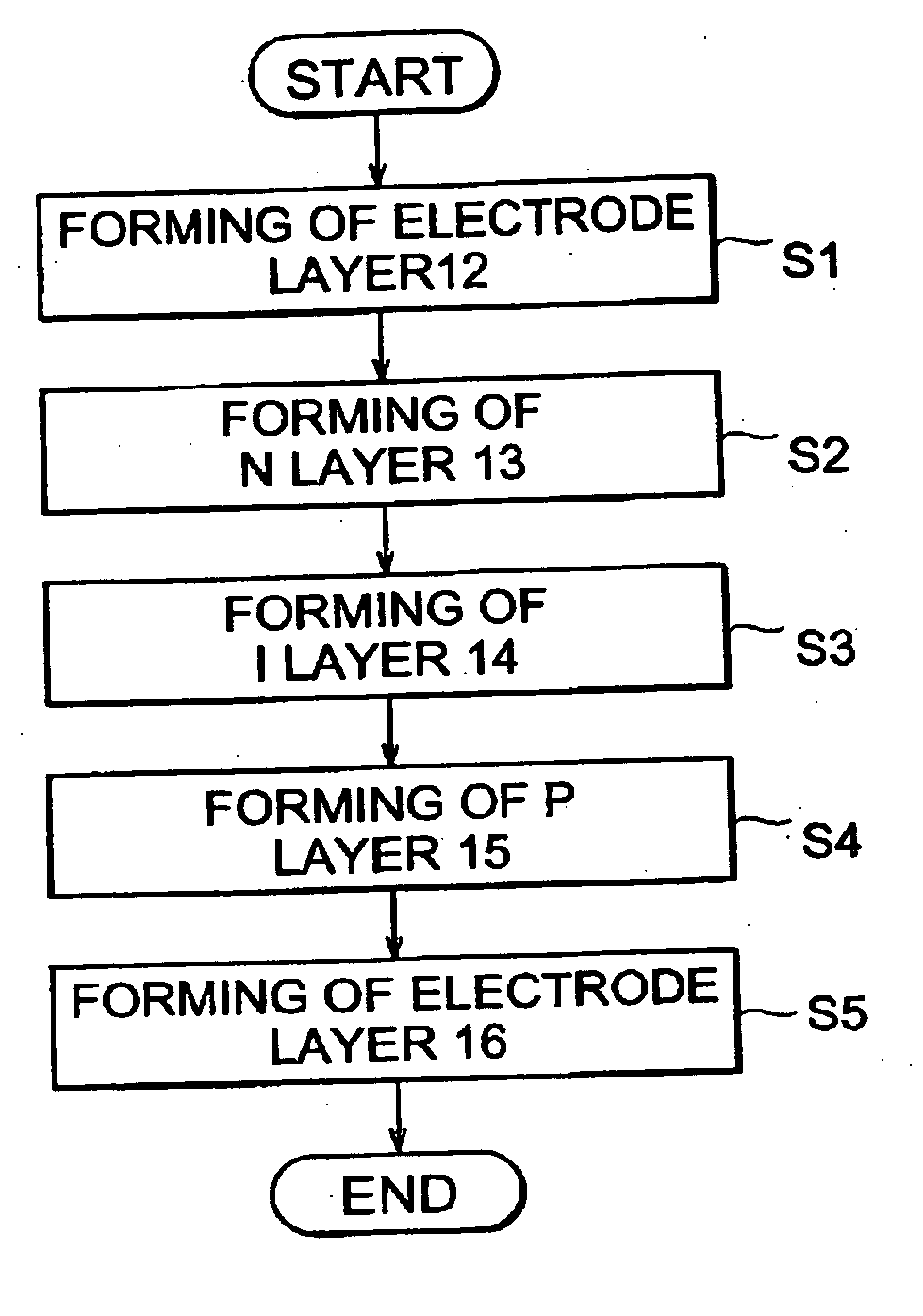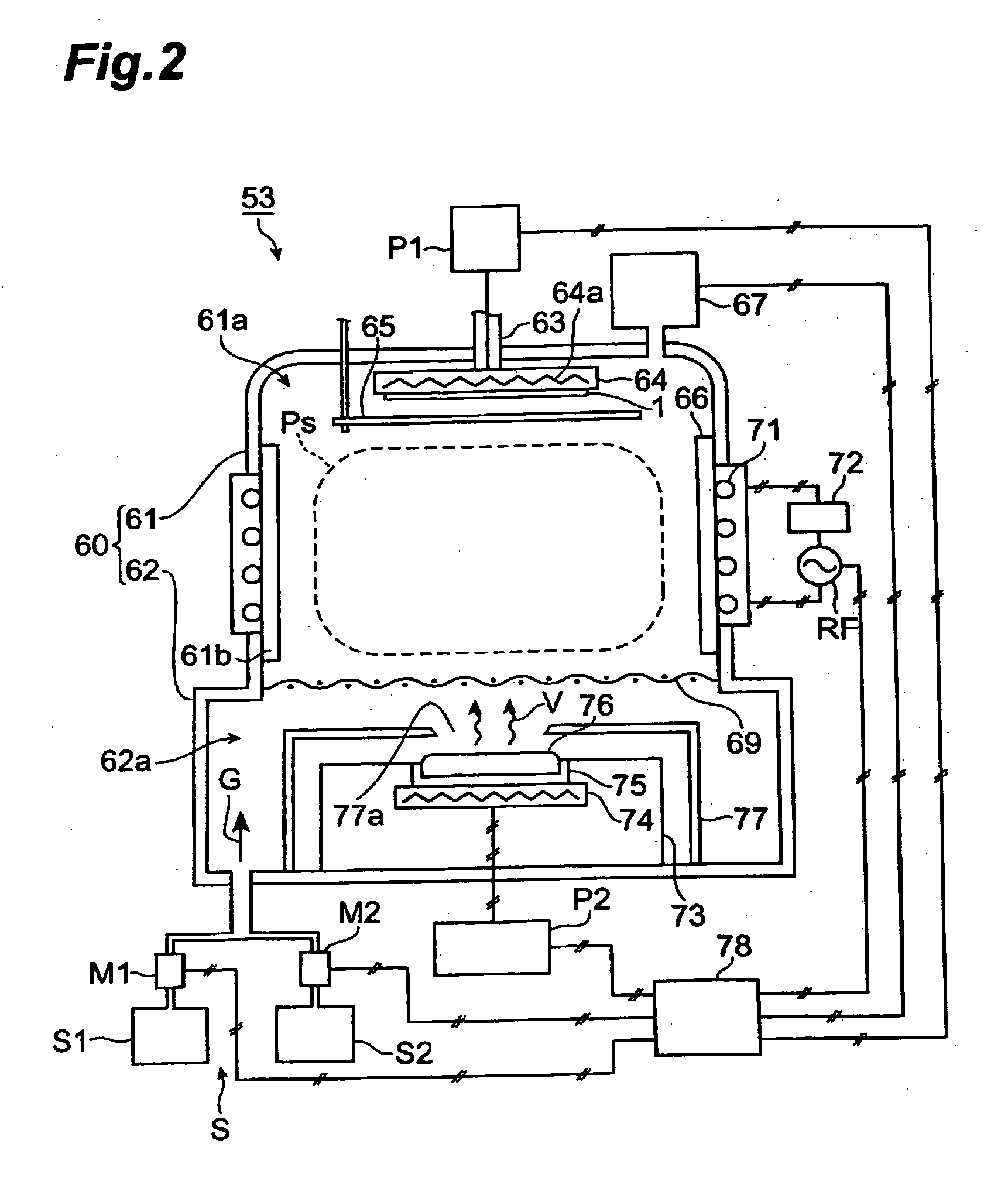Method of making iron silicide and method of making photoelectric transducer
a technology of iron silicide and photoelectric transducer, which is applied in the direction of coatings, chemical vapor deposition coatings, semiconductor devices, etc., can solve the problems of increasing process restrictions, adversely affecting the nature and characteristics of layers (films) and device characteristics, and increasing material costs, so as to eliminate bonding defects, influence on stability and film quality, and eliminate bonding defects in iron silicide films
- Summary
- Abstract
- Description
- Claims
- Application Information
AI Technical Summary
Benefits of technology
Problems solved by technology
Method used
Image
Examples
example 1
[0089] As a substrate, an Si wafer having a main surface with a surface orientation of (100) was accommodated in the upper part within a chamber, so as to be secured to a support table in a facedown fashion. The chamber was evacuated from the upper side of the chamber (the upper wall of the chamber opposing the rear side of the Si wafer) such that the pressure within the chamber became 1.33 Pa. While maintaining this pressure, a monosilane (SiH4) gas and a hydrogen (H2) gas each at a flow rate of 50 sccm were supplied into the chamber, and a high-frequency power of 50 W was applied to an L-coupling copper coil disposed about the chamber, so as to form a plasma of a mixed gas constituted by the monosilane gas and hydrogen gas.
[0090] Simultaneously with the forming of plasma, an iron ingot placed below the Si wafer was heated to about 1900° C. by resistance heating, and the iron vapor generated upon evaporation of iron was supplied into the plasma along the exhaust flow within the ch...
example 2
[0096] First, a metal electrode layer 12 having a thickness of 0.3 μm made of Ti was formed by sputtering on a glass substrate (substrate 11) having a main surface with a surface orientation of (100). Subsequently, an n layer 13 having a thickness of 30 nm made of n-type silicon was formed by plasma CVD on the metal electrode layer 12, and an i layer 14 made of an iron silicide film having a thickness of 400 nm was formed on the n layer 13 as in Example 1. Next, a p layer made of p-type silicon having a thickness of 20 nm was formed by plasma CVD on the i layer 14, so as to construct a p-i-n junction 100. Further, a transparent electrode layer 16 made of ITO having a thickness of 80 nm was formed on the p-i-n junction 100, so as to make a photoelectric transducer unit in accordance with the present invention configured as with the solar cell 10 shown in FIG. 3.
example 3
[0097] A photoelectric transducer unit in accordance with the present invention configured as with the hybrid solar cell 20 shown in FIG. 4 was made in the same manner as with Example 2 except that, after the i layer 14 (corresponding to the i layer 241) was formed, an i layer 242 made of amorphous silicon having a thickness of 200 nm was formed thereon by plasma CVD (under the film-forming condition with SiH4 flow rate of 20 sccm, H2 flow rate of 200 sccm, in-chamber pressure of 133 Pa, high-frequency power of 60 W, and substrate temperature of 200° C.), and that a p layer 15 was formed on the i layer 242, so as to construct a p-i-n junction 200.
PUM
| Property | Measurement | Unit |
|---|---|---|
| temperature | aaaaa | aaaaa |
| temperature | aaaaa | aaaaa |
| temperature | aaaaa | aaaaa |
Abstract
Description
Claims
Application Information
 Login to View More
Login to View More - R&D
- Intellectual Property
- Life Sciences
- Materials
- Tech Scout
- Unparalleled Data Quality
- Higher Quality Content
- 60% Fewer Hallucinations
Browse by: Latest US Patents, China's latest patents, Technical Efficacy Thesaurus, Application Domain, Technology Topic, Popular Technical Reports.
© 2025 PatSnap. All rights reserved.Legal|Privacy policy|Modern Slavery Act Transparency Statement|Sitemap|About US| Contact US: help@patsnap.com



